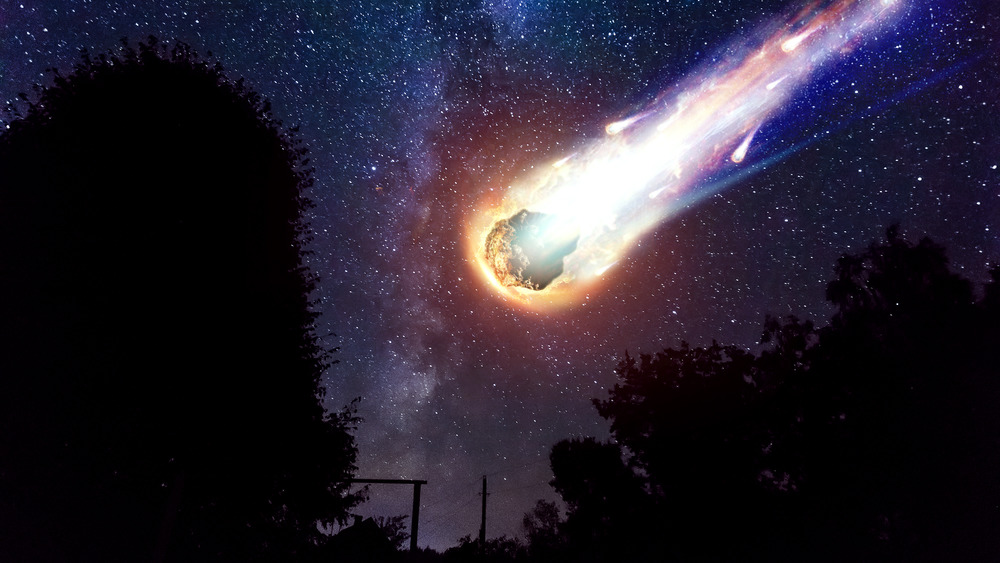How Are Meteors And Meteorites Different?
Jiminy Cricket might have advised us to wish upon a star during the credits for Pinocchio, and Perry Como (via YouTube) advised us to actually catch a falling star. Star Trek, Star Wars, Star Search — you'd be forgiven if a discussion of heavenly bodies was all tomato-tomahto. A meteorite is just a diminutive meteor, right?
Not really. Distinctions must be made. And have been. Throw in comets, and asteroids, and meteoroids (but not hemorrhoids), and you have to wonder why NASA's first priority wasn't setting up traffic signals.
All manner of objects move through the heavens and, more specifically, through our solar system. Some make regular appearances — Halley's Comet, for instance, roughly every 75 years. A comet, explains the BBC, orbits the sun, but is more like "a dirty snowball," made up of dust and ice. That compares with asteroids, which are indeed rocks of varying size — smaller than planets, but some are relatively massive — Ceres, the largest, is nearly 600 miles wide — though most are much smaller.
A meteoroid, by comparison, is a subset of asteroids — usually a piece of asteroid that's broken off (rocky asteroids have been known to bump into one another) and is making its own way through space. They can be quite small — think of a grain of sand — or a little larger — maybe about a yard across, says the BBC.
What you call it depends where it is
But as every real estate agent will tell you, location (plus location, and also location) makes a difference, and so it is with bits of space traffic. The bit of asteroid that becomes a meteoroid (so, yes, size as well) might hit Earth's atmosphere and be drawn down toward the planet's surface. As they streak across the sky they generally burn up, creating a bit of a show during the night (when they can best be seen). And then we get to the location part: At that point they become meteors. And further for location: if our friend the meteor doesn't entirely burn up upon entry and hits terra firma, it's a meteorite.
The Space website tells us that meteorites come in three flavors: stony, metallic, and (you probably saw this coming) stony metallic, depending on the composition of the object in question.
Business Insider tells us that the largest found in the United States is the Willamette Meteorite, weighing in at 15.5 tonnes. The biggest ever to land on Planet Earth (so far) is named Hoba. It came to Earth in Namibia, and weighs 60 tonnes. Probably won't fit in your pocket.

